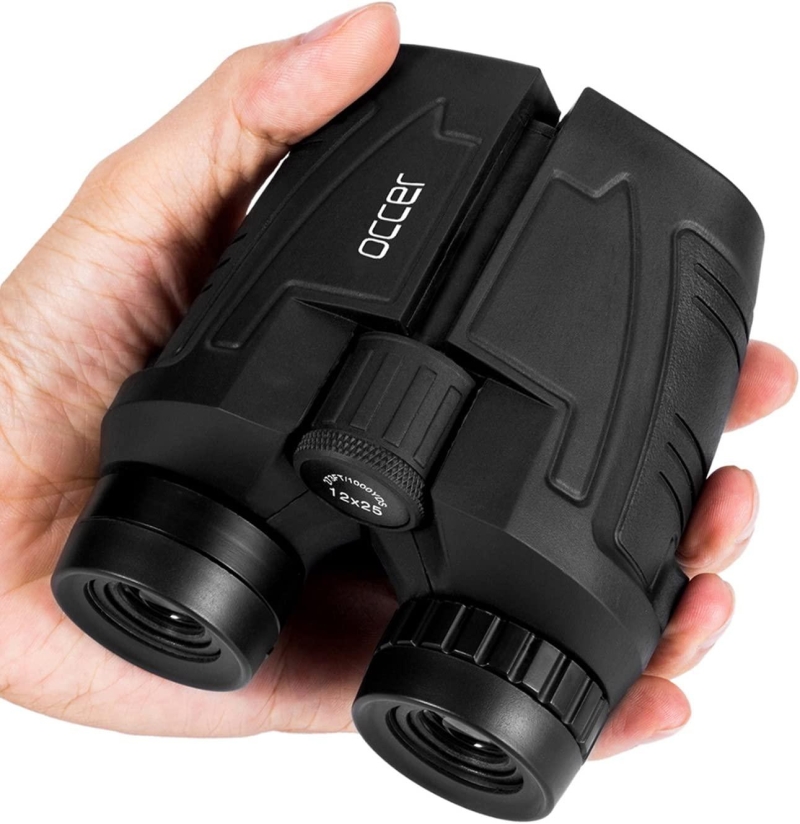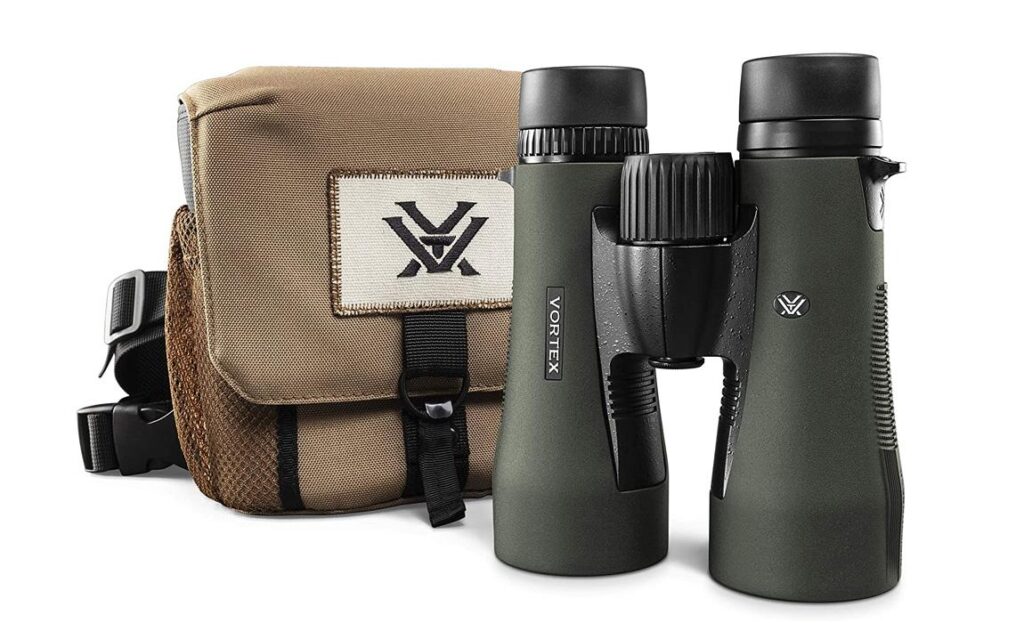Imagine embarking on an exciting Alaska cruise, surrounded by stunning landscapes and wildlife. As you prepare for this unforgettable adventure, it’s important to equip yourself with the right gear, including a pair of high-quality binoculars. These optical gems will enhance your experience by allowing you to get an up-close view of magnificent glaciers, majestic whales, and soaring eagles. In this article, we will guide you through the process of buying binoculars for your Alaska cruise, ensuring that you make an informed decision and have a truly captivating journey. So, let’s embark on this binocular-buying adventure together!

Factors to Consider
Purpose of the Binoculars
When choosing binoculars for your Alaska cruise, it is important to consider their purpose. Are you planning on observing wildlife from the ship’s deck or will you be using them for excursions on land? Binoculars designed for birdwatching may be different from those used for stargazing, so understanding your specific purpose will help guide your decision-making process.
Budget
Before diving into the world of binoculars, it’s important to determine your budget. Binoculars can range in price from under $100 to several thousand dollars. Setting a realistic budget will help narrow down your options and prevent you from overspending.
Optical Power
The optical power, also referred to as magnification, is an important factor to consider. Higher magnification allows for closer views, but it may also result in a narrower field of view and increased shakiness when hand-held. Assess your needs and preferences to determine the ideal optical power for your binoculars.
Lens Size
The size of the binoculars’ lenses affects the amount of light they gather, which in turn impacts the image brightness and clarity. Larger lenses allow for more light transmission, making them suitable for low-light conditions such as dawn or dusk. However, larger lenses also mean larger and heavier binoculars, so it’s important to strike a balance between image quality and portability.
Image Stabilization
If you anticipate using your binoculars without a tripod, considering image stabilization technology is crucial. Image stabilization helps minimize shaky images, allowing for clearer and more enjoyable viewing experiences, especially when observing distant subjects or using high magnification.
Durability
When embarking on an Alaska cruise, you want binoculars that can withstand rugged conditions. Look for binoculars that are built with durable materials and have features like rubber coatings or armor for enhanced shock resistance. Opting for waterproof and fogproof binoculars is also essential to ensure they can withstand the unpredictable weather conditions often encountered during cruises.
Weight and Size
Considering the weight and size of the binoculars is important if you’ll be carrying them throughout your cruise. Opting for lightweight and compact models can make a significant difference in comfort and ease of use, especially during long excursions.
Waterproof and Fogproof
Given the potentially damp and foggy conditions in Alaska, choosing binoculars that are both waterproof and fogproof is strongly recommended. These features will protect your investment and ensure clear visibility even in challenging weather conditions.
Eyeglass Compatibility
If you wear eyeglasses, check whether the binoculars are designed with comfortable eye relief and sufficient space to accommodate your glasses. This will allow you to use the binoculars without needing to remove your glasses, making for a more convenient and enjoyable experience.
Additional Features
Consider any additional features that may enhance your viewing experience. Some binoculars may offer features such as built-in compasses, rangefinders, or tripod adaptability. While these features are not essential, they can enhance your overall enjoyment and convenience when using the binoculars.
Choosing the Right Binoculars
Research the Destination
Before investing in a pair of binoculars, take the time to research your cruise destination. Alaska is known for its diverse wildlife, stunning landscapes, and unique climate. Understanding the specific wildlife species you may encounter and the landscapes you’ll be exploring will help you determine the best binoculars suited for observing and enjoying those experiences.
Decide on Magnification and Field of View
The magnification of binoculars determines how close the objects will appear, while the field of view determines the width of the area you can see. For the vast landscapes of Alaska, a lower magnification (8x or 10x) is generally recommended to ensure a wider field of view and a steadier image. However, if you plan on primarily observing distant wildlife, higher magnification may be preferable.
Select the Appropriate Lens Size
Consider the lighting conditions during your Alaska cruise when choosing the lens size. For ample light conditions, such as daytime observation, a lens size of 32mm to 42mm is usually sufficient. In low-light or dim conditions, larger lenses (42mm and above) will help gather more light and provide brighter images.
Consider Image Stabilization
If you anticipate using your binoculars without a tripod or if you have shaky hands, binoculars with image stabilization technology can greatly enhance your viewing experience. Image stabilization helps mitigate hand movements, resulting in clearer and more enjoyable visuals.
Check for Weather Resistance
When cruising through Alaska’s unpredictable weather, it’s crucial to choose binoculars that can handle the elements. Look for binoculars that are waterproof and fogproof to ensure they can withstand damp conditions and sudden changes in temperature without compromising performance.
Test for Comfort and Ergonomics
Binoculars that feel comfortable in your hands and are easy to adjust will greatly enhance your overall experience. Look for a design that suits your hands, with buttons and adjustments that are conveniently placed and easy to operate. Consider whether the binoculars are easy to focus and if they offer comfortable eye relief for extended use.
Evaluate Optics Quality
Optics quality greatly influences the clarity and brightness of the images you observe. Look for binoculars with high-quality lenses, such as those made from extra-low dispersion glass, as they provide exceptional color accuracy and sharpness. Coatings on the lenses, such as anti-reflective coatings, can also improve image quality and reduce glare.
Compare Brands and Models
Take the time to compare different brands and models to find the best fit for your needs. Look for reputable brands known for their quality and customer satisfaction. Reading reviews and ratings from other users can provide valuable insights and help you make an informed decision.
Read Customer Reviews
Customer reviews can be a valuable resource when choosing binoculars. They provide real-world feedback on the performance, durability, and overall satisfaction of specific models. Be sure to read a variety of reviews from different sources to get a well-rounded understanding of the binoculars’ strengths and weaknesses.
Try Before You Buy
Whenever possible, try out the binoculars before making your final decision. Visit a store that allows you to handle and test different models. This hands-on experience will help you assess the comfort, ergonomics, and optical performance of the binoculars, ensuring they meet your expectations.

Where to Buy Binoculars
Physical Retail Stores
Many sporting goods stores, camera shops, and outdoor retailers carry a wide selection of binoculars. Visiting a physical store allows you to see and feel the binoculars in person, enabling you to make a more informed decision. Additionally, knowledgeable sales representatives can provide guidance and answer any questions you may have.
Online Retailers
Online shopping offers convenience and a vast range of options. Numerous websites specialize in selling binoculars and outdoor equipment. When purchasing online, make sure to read product descriptions, specifications, and customer reviews to ensure you’re making an informed decision. It’s also advisable to purchase from reputable websites with secure payment options.
Camera and Sporting Goods Stores
Stores specializing in cameras and sporting goods often carry a selection of binoculars. These stores typically have knowledgeable staff who can provide expert advice on choosing the right binoculars for your needs. They may also offer the opportunity to try out different models before making a purchase.
Specialty Optics Stores
Specialty optics stores cater specifically to binoculars, telescopes, and other optical equipment. These stores often have a wide variety of brands and models, along with staff who are well-versed in optics. Shopping at a specialty store can provide a more tailored and in-depth experience, ensuring you find the perfect binoculars for your Alaska cruise.
Secondhand Markets
If you’re on a budget or looking for a specific model that may no longer be available new, exploring secondhand markets can be a viable option. Platforms like online classifieds, auction websites, or even local flea markets can sometimes offer well-maintained, used binoculars at a lower price point. When buying secondhand, thoroughly inspect the binoculars and ensure they are in good working condition.
Determining Price Range
Set a Realistic Budget
Establishing a budget is crucial when purchasing binoculars. Consider how much you are willing to spend and what features are essential for your needs. While it can be tempting to stretch the budget for top-of-the-line models, remember that there are excellent options available at various price points.
Evaluate the Cost-Performance Ratio
When determining your price range, consider the cost-performance ratio. Higher-priced binoculars often offer superior optical quality, durability, and additional features. However, it’s essential to find a balance and prioritize features that are most important to you. Evaluate the overall value and quality that each price point provides.
Consider Long-Term Investment
Binoculars can be a long-term investment if taken care of properly. Consider whether you want binoculars that will last for many years or if you are looking for a more budget-friendly option for occasional use. Balancing your budget and long-term requirements will help you make a wise investment.

Understanding the Technical Specifications
Optical Power and Magnification
Optical power, or magnification, is represented by a number followed by an “x” (e.g., 8x, 10x). This number indicates how many times closer the observed object will appear compared to the naked eye. Higher magnification provides more detail but can result in a narrower field of view and potentially shakier images.
Objective Lens Diameter
The objective lens diameter is represented by the second number in the binocular specifications (e.g., 8×42, 10×50). It refers to the diameter of the front lenses in millimeters. Larger objective lenses allow more light to enter, resulting in brighter images, especially in low-light conditions. However, larger lenses also increase the overall size and weight of the binoculars.
Exit Pupil Size
The exit pupil size is calculated by dividing the objective lens diameter by the magnification (e.g., 8×42 binoculars have an exit pupil size of 5.25mm). The exit pupil represents the size of the beam of light that enters your eye. A larger exit pupil size generally results in brighter images, particularly in low-light conditions. It is also worth considering if you wear eyeglasses, as a larger exit pupil can help ensure the entire field of view is visible.
Field of View
The field of view (FOV) refers to the width of the area visible through the binoculars. It is typically represented by either the linear measurement (e.g., 350 feet at 1,000 yards) or the angular measurement (e.g., 6.7 degrees). A wider field of view allows you to observe more area at once, making it easier to track moving subjects or scan large landscapes.
Lens Coatings
Lens coatings greatly impact the image quality. Anti-reflective coatings on the lenses reduce glare and enhance light transmission, resulting in brighter, sharper, and more color-rich images. Look for binoculars with multiple layers of coatings, such as fully multi-coated or phase-coated, for optimal optical performance.
Prism Type
Binoculars use prisms to correct the image and provide a more compact design. The two common types of prisms are roof prisms and porro prisms. Roof prisms result in a straight and compact design, typically found in higher-end models. Porro prisms provide a more traditional and affordable design with wider separation between the objective lenses.
Close Focus Distance
The close focus distance refers to how close you can get to an object and still maintain a clear image. This specification is particularly important if you plan on observing nearby subjects or exploring flora and fauna in detail.
Eye Relief
Eye relief is the distance from the eyepiece lens to your eye when you see the full image. It is especially important if you wear eyeglasses, as longer eye relief allows you to comfortably observe without vignetting or loss of field of view. Look for binoculars with an eye relief of at least 14mm to ensure compatibility with eyeglasses.
Twilight Factor
The twilight factor is a calculation that determines the effectiveness of binoculars in low-light conditions. It is calculated by multiplying the magnification by the square root of the objective lens diameter. A higher twilight factor indicates better performance in low-light conditions, making it easier to observe wildlife during dawn or dusk.
Interpupillary Distance Adjustment
The interpupillary distance adjustment allows you to adjust the distance between the eyepieces to match the distance between your eyes. This ensures a comfortable and immersive viewing experience. Binoculars with a wider range of adjustment can accommodate a variety of users, including children or individuals with narrower or wider interpupillary distances.
Quality Brands and Models
Nikon Prostaff 3S
The Nikon Prostaff 3S is a budget-friendly option that offers excellent optical performance and durability. It features multi-coated lenses, a wide field of view, and a lightweight design, making it ideal for extended use.
Vortex Diamondback HD
The Vortex Diamondback HD is known for its exceptional optical quality and rugged construction. With fully multi-coated lenses, phase-corrected prisms, and a waterproof/fogproof design, it provides impressive performance in a variety of conditions.
Zeiss Terra ED
The Zeiss Terra ED combines renowned Zeiss optics with a compact and lightweight design. It delivers outstanding image quality, precise focusing, and comfortable handling, making it a popular choice among nature enthusiasts.
Bushnell Legend L-Series
The Bushnell Legend L-Series offers a great balance of performance and affordability. It features fully multi-coated lenses, a wide field of view, and a durable build. The inclusion of ultra-wideband coatings enhances light transmission and image clarity.
Swarovski SLC
The Swarovski SLC is a high-end binocular renowned for its exceptional optical performance and ruggedness. Boasting high-quality coatings, a wide field of view, and a close focus distance, it offers an immersive and detailed viewing experience.
Leica Ultravid HD-Plus
The Leica Ultravid HD-Plus is highly regarded for its superior optical quality and precise mechanics. With outstanding color fidelity, excellent low-light performance, and a robust construction, the Ultravid HD-Plus is a top choice for discerning enthusiasts.
Celestron Nature DX
The Celestron Nature DX is an affordable option that doesn’t compromise on performance. It features fully multi-coated lenses, a durable construction, and a close focus distance, making it suitable for both wildlife observation and casual astronomy.
Pentax AD WP
The Pentax AD WP is known for its waterproof and fogproof design, making it an excellent choice for coastal environments. With multi-coated lenses, a wide field of view, and long eye relief, it provides comfortable and clear viewing experiences.
Steiner Marine
The Steiner Marine binoculars are specifically designed for nautical use. They offer waterproof and shock-resistant construction, excellent low-light performance, and image stabilization. These features make them ideal for observing marine wildlife during your Alaska cruise.
Canon 10×42 L IS WP
The Canon 10×42 L IS WP is a high-performance binocular equipped with image stabilization technology and superior optics. Its L-series designation signifies professional-grade quality, making it an excellent choice for those who value image stability and clarity.

Conclusion
Choosing the right binoculars for your Alaska cruise involves considering various factors such as purpose, budget, optical power, lens size, and image stabilization. Ensuring the binoculars are durable, lightweight, and weather-resistant is also important. Researching destination-specific requirements and testing different models before buying can help you make an informed decision. Consider your budget, evaluate the cost-performance ratio, and assess long-term investment qualities. Understanding technical specifications, such as magnification, lens diameter, field of view, and lens coatings, is crucial. Finally, explore reputable brands and models, read customer reviews, and consider where to purchase binoculars. With careful consideration and the right binoculars in hand, you’ll be able to enjoy the breathtaking sights and wildlife sightings during your Alaska cruise.
Hi, I’m Mike, the author of Ocean Bliss Journeys. Thank you for visiting 🙂

